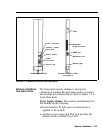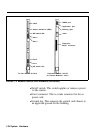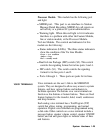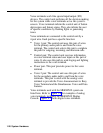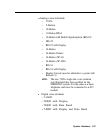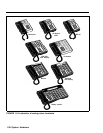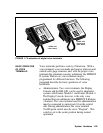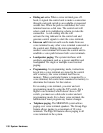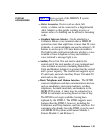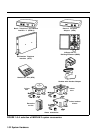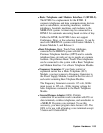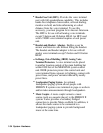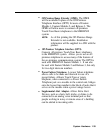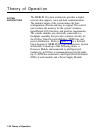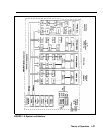
●
●
●
●
●
Dialing out or in.
When a voice terminal goes off-
hook, it signals the control unit to make a connection
through a network switch to an available or requested
outside line. When the path is established, the voice
terminal receives a dial tone. The control unit will
select a path in its multiplexing scheme to make the
connection. A call coming into the will
activate the ring indicator in the control unit and
generate control signals to alert the voice terminal.
Intercom call.
Intercom calls can be made from one
voice terminal to-any other voice terminal connected to
the control unit. Dialing the intercom number of
another voice terminal will cause the control unit to
establish a voice path between both voice terminals.
Loudspeaker paging.
The system interfaces with
auxiliary equipment such as a power amplifier and
loudspeaker for single or multiple zone external
paging.
Programming.
In programming mode, instructions
keyed into a voice terminal are stored in the control
unit’s memory; the voice terminal itself has no
memory. When a particular feature is requested by a
voice terminal, the control unit examines its memory to
determine the features for that station.
For an analog voice terminal, you enter and exit
programming mode by using the T/P switch. For a
digital voice terminal, which doesn’t have a T/P
switch, you must use a dial code to enter and exit
programming mode. For a basic voice terminal, the
administrator must program any feature changes.
Telephone paging.
The MERLIN II system allows
paging over voice terminal speakers. The Group Page
feature allows paging to a maximum of 10 voice
terminals. The Page All feature allows paging to all
voice terminals in the system.
1-30 System Hardware




